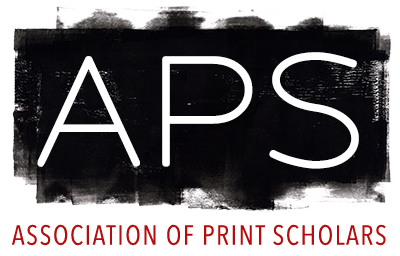Exhibition Curated
Posted: 04/23/2022
Evan Lindquist Engraves Engravers
Norwood Creech.
Evan Lindquist Engraves Engravers.
Quigley Gallery, Western Colorado Univeristy :
Gunnison ,
CO, United States.
2022
Evan Lindquist Engraves Engravers' is an exhibition of thirty copperplate engravings of engravers of historical importance. Each print engraved and printed by Arkansas Artist Laureate, Evan Lindquist, Emeritus Professor of Art, Arkansas State University, Jonesboro, Arkansas, USA.
LIST OF ENGRAVINGS CHRONOLOGICALLY BY ENGRAVER
1. Master ES Invents Crosshatch Shading, 2014 / Master ES (1420–1468)
2. The First Printmaker-Engraver, 2013 / The Master of the Playing Cards (active 1430s–1450s)
3. Andrea Mantegna Engraves Julius Caesar, 2016 / Andrea Mantegna (1431–1506)
4. Israhel van Meckenem Engraves Ida's Portrait, 2017 / Israhel van Meckenem (c.1445–1503)
5. Martin Schöngauer Engraves St Anthony, 2010 / Martin Schöngauer (c.1450/53–1491)
6. Albrecht Dürer Engraves His Initials, 2008 / Albrecht Dürer (1471–1528)
7. Dürer’s Ladder, 2021 / Albrecht Dürer (1471–1528)
8. Knight, Bird & Burin, 2006 / Albrecht Dürer (1471–1528)
9. Lucas Cranach the Elder Engraves Martin Luther, 2021 / Lucas Cranach the Elder (1472–1553)
10. Marcantonio Raimondi Engraves a Raphael, 2017 / Marcantonio Raimondi (c. 1480–1534)
11. Giulio Campagnola Invents Stipple Engraving, 2019 / Giulio Campagnola (c.1482–c.1515)
12. Jean Duvet Engraves an Apocalypse, 2017 / Jean Duvet (1485–c.1570)
13. Lucas van Leyden Engraves a Feather, 2011 / Lucas van Leyden (1494–1533)
14. Diana Scultori Engraves for Vasari, 2018 / Diana Scultori (1535–1612)
15. Hendrik Goltzius Engraves with Maimed Hand, 2011 / Hendrik Goltzius (1558–1617)
16. Aegidius Sadeler Engraves a Landscape, 2020 / Aegidius Sadeler (1570–1629)
17. Jacques Callot Discards His Burins, 2012 / Jacques Callot (1592–1635)
18. Claude Mellan Engraves a Self-Portrait, 2008 / Claude Mellan (1598–1688)
19. Magdalena van de Passe Engraves a Portrait, 2019 / Magdalena van de Passe (1600–1638)
20. William Hogarth Engraves a Line of Beauty, 2008 / William Hogarth (1697–1764)
21. William Blake Engraves the Inferno, 2010 / William Blake (1757–1827)
22. Jozef Hecht Explains the Burin, 2016 / Jozef Hecht (1891–1951)
23. Reginald Marsh Engraves a Horse, 2012 / Reginald Marsh (1898–1954)
24. Robert Austin Engraves a Puppet, 2015 / Robert Sargent Austin (1895–1973)
25. SW Hayter Engraves War, 2015 / Stanley William Hayter (1901–1988)
26. Armin Landeck Sharpens a Burin, 2013 / Armin Landeck (1905–1984)
27. Mauricio Lasansky Teaches Me to Engrave, 2015 / Mauricio Lasansky (1914–2012)
28. Gabor Peterdi Engraves a Still Life, 2009 / Gabor Peterdi (1915–2001)
29. Man with a Burin, 2012 / Evan Lindquist (b.1936)
30. My Thoughts, 2016 / Evan Lindquist (b. 1936)
© Evan Lindquist / Artists Rights Society (ARS), New York. All Images, All Rights Reserved.
For further information about Evan Lindquist, his copperplate engravings, along with full bio, resources, and images from other series and editions, please visit EvanLindquist.com
On Instagram: Evan Lindquist Engraves Engravers @e.lindquist.engraves.engravers Evan Lindquist @lindquist8860
#EvanLindquistEngravesEngravers #Burin #Line #Engraving #CopperplateEngraving #Portrait #Print #Intaglio #Printmaking #Arkansas #ArkansasArtistLaureate #Printmaker #EngravingEngravers #EvanLindquist
LIST OF ENGRAVINGS CHRONOLOGICALLY BY ENGRAVER
1. Master ES Invents Crosshatch Shading, 2014 / Master ES (1420–1468)
2. The First Printmaker-Engraver, 2013 / The Master of the Playing Cards (active 1430s–1450s)
3. Andrea Mantegna Engraves Julius Caesar, 2016 / Andrea Mantegna (1431–1506)
4. Israhel van Meckenem Engraves Ida's Portrait, 2017 / Israhel van Meckenem (c.1445–1503)
5. Martin Schöngauer Engraves St Anthony, 2010 / Martin Schöngauer (c.1450/53–1491)
6. Albrecht Dürer Engraves His Initials, 2008 / Albrecht Dürer (1471–1528)
7. Dürer’s Ladder, 2021 / Albrecht Dürer (1471–1528)
8. Knight, Bird & Burin, 2006 / Albrecht Dürer (1471–1528)
9. Lucas Cranach the Elder Engraves Martin Luther, 2021 / Lucas Cranach the Elder (1472–1553)
10. Marcantonio Raimondi Engraves a Raphael, 2017 / Marcantonio Raimondi (c. 1480–1534)
11. Giulio Campagnola Invents Stipple Engraving, 2019 / Giulio Campagnola (c.1482–c.1515)
12. Jean Duvet Engraves an Apocalypse, 2017 / Jean Duvet (1485–c.1570)
13. Lucas van Leyden Engraves a Feather, 2011 / Lucas van Leyden (1494–1533)
14. Diana Scultori Engraves for Vasari, 2018 / Diana Scultori (1535–1612)
15. Hendrik Goltzius Engraves with Maimed Hand, 2011 / Hendrik Goltzius (1558–1617)
16. Aegidius Sadeler Engraves a Landscape, 2020 / Aegidius Sadeler (1570–1629)
17. Jacques Callot Discards His Burins, 2012 / Jacques Callot (1592–1635)
18. Claude Mellan Engraves a Self-Portrait, 2008 / Claude Mellan (1598–1688)
19. Magdalena van de Passe Engraves a Portrait, 2019 / Magdalena van de Passe (1600–1638)
20. William Hogarth Engraves a Line of Beauty, 2008 / William Hogarth (1697–1764)
21. William Blake Engraves the Inferno, 2010 / William Blake (1757–1827)
22. Jozef Hecht Explains the Burin, 2016 / Jozef Hecht (1891–1951)
23. Reginald Marsh Engraves a Horse, 2012 / Reginald Marsh (1898–1954)
24. Robert Austin Engraves a Puppet, 2015 / Robert Sargent Austin (1895–1973)
25. SW Hayter Engraves War, 2015 / Stanley William Hayter (1901–1988)
26. Armin Landeck Sharpens a Burin, 2013 / Armin Landeck (1905–1984)
27. Mauricio Lasansky Teaches Me to Engrave, 2015 / Mauricio Lasansky (1914–2012)
28. Gabor Peterdi Engraves a Still Life, 2009 / Gabor Peterdi (1915–2001)
29. Man with a Burin, 2012 / Evan Lindquist (b.1936)
30. My Thoughts, 2016 / Evan Lindquist (b. 1936)
© Evan Lindquist / Artists Rights Society (ARS), New York. All Images, All Rights Reserved.
For further information about Evan Lindquist, his copperplate engravings, along with full bio, resources, and images from other series and editions, please visit EvanLindquist.com
On Instagram: Evan Lindquist Engraves Engravers @e.lindquist.engraves.engravers Evan Lindquist @lindquist8860
#EvanLindquistEngravesEngravers #Burin #Line #Engraving #CopperplateEngraving #Portrait #Print #Intaglio #Printmaking #Arkansas #ArkansasArtistLaureate #Printmaker #EngravingEngravers #EvanLindquist
Relevant research areas: North America, Renaissance, Baroque, 18th Century, 19th Century, 20th Century, Contemporary, Engraving
